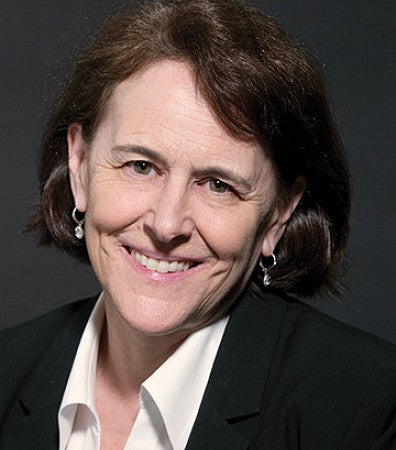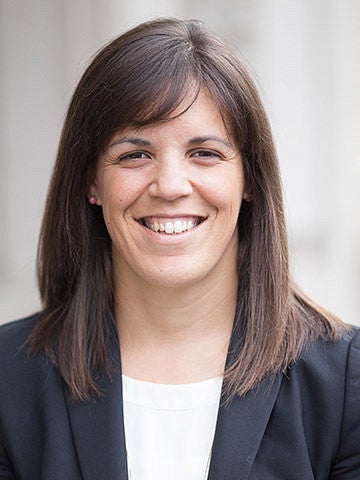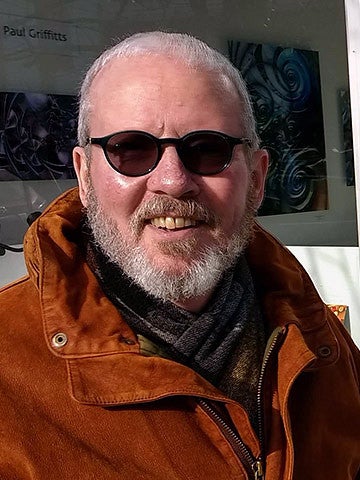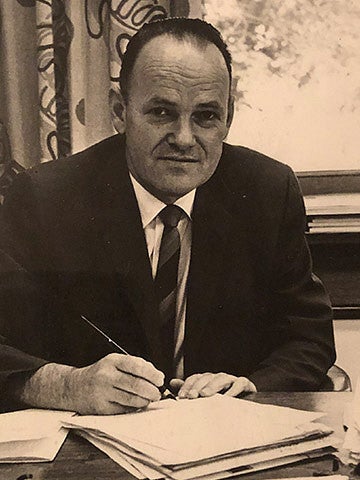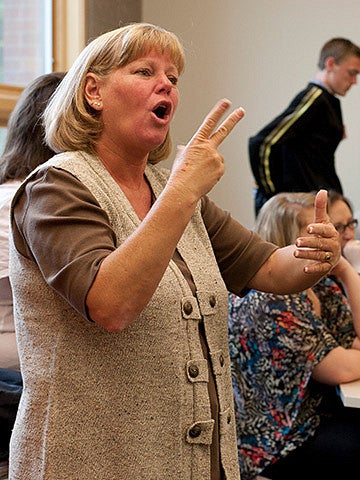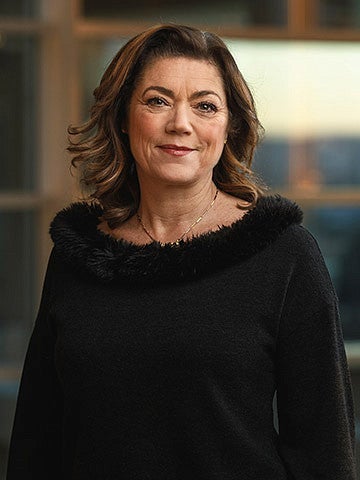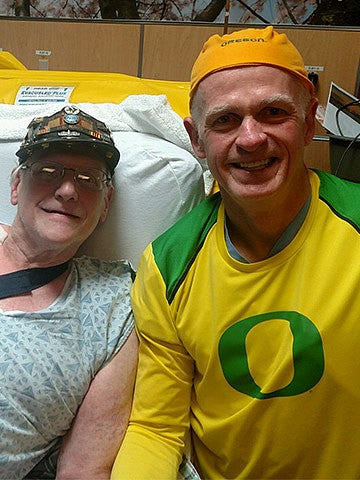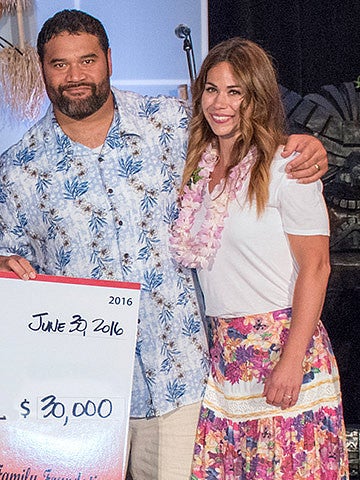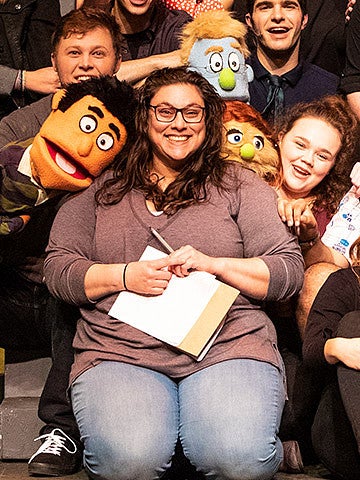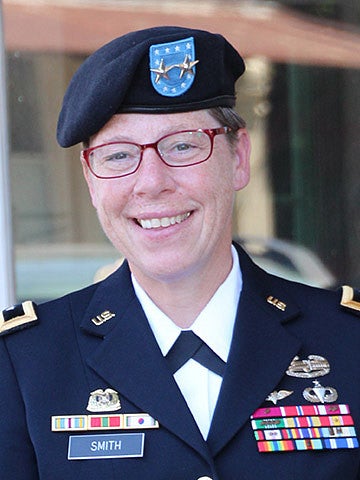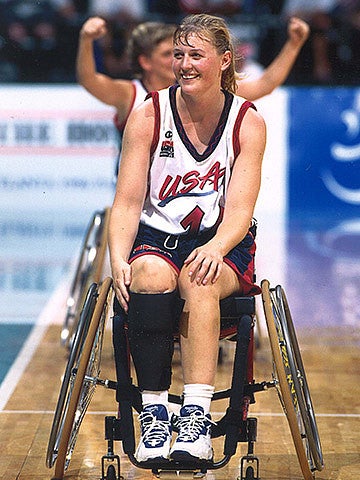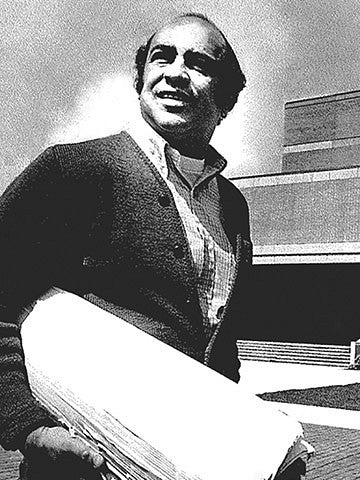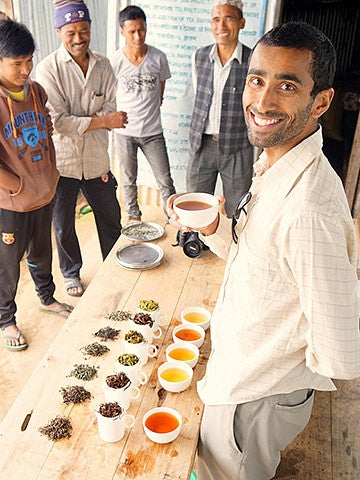
100 years of innovators and inventors, game-changers, trailblazers, humanitarians—inspirations to us all
Happy 100th birthday to . . . us! Oregon Quarterly was born in March 1919 as Old Oregon, “issued for Alumni and Former Students of the University.” The 56-page publication opened with a remembrance of the UO’s early days and included campus happenings, marriages, and—then as now—class notes. The fledgling magazine was challenged to become a symbol for the inspiration created by the university.
Well, look no farther for inspiration. In celebration of our 100th anniversary, we asked you to nominate 100 Ducks Who Made a Difference: alumni, students, faculty, staff, administrators, and friends of the university, from 1919 to present, who, through grit, talent, compassion, or creativity have made our world better.
And you delivered. We narrowed hundreds of your worthy submissions into a list of 100 barrier breakers and change makers. What you’ll see is not a ranking of the top, the best, the richest, or the famous. (Indeed, even Phil Knight is not on the list.) Rather, thanks to your ideas, it displays, in alphabetical order, a diverse range of Ducks—a few familiar, many unexpected—who represent the impact the UO has made over the last century.
We think this list makes good on the challenge issued to the magazine 100 years ago. Thank you for your submissions . . . and Go Ducks!
—George Evano, publisher, Oregon Quarterly
Jump to Section: A-B, C-D, E-F, G-H, I-J, K-L, M-N, O-P, Q-R, S-T, U-V, W-X, Y-Z
Paula Gunn Allen
BA ’66 ENGLISH, MFA ’68 CREATIVE WRITING, D. 2008
The Native American poet and scholar wrote award-winning novels and inspired a generation of feminist writers.
Aisha Almana
BS ’70 SOCIOLOGY
The hospital executive’s vision and generosity is creating opportunities for women through the UO Global Health program.
Corazón Aquino
HONORARY PHD ’95, D. 2009
The first female president of the Philippines, she restored democracy after the dictatorship of Ferdinand Marcos. She gave the UO commencement address in 1995; a tree planted in her honor can be viewed at the west entrance to campus.
Geoffrey Ball
BS ’87 HUMAN PERFORMANCE-PHYSIOLOGY
Deaf since age three, he eventually solved his impairment by inventing innovative middle-ear implants and now holds more than 100 patents.
Emery Barnes
BS ’54 HISTORY, D. 1998
In 1994, he became the first African American and first black person to be speaker of the British Columbia legislature and the first black person to hold this position in a Canadian provincial legislature.
Derrick Bell Jr.
DEAN OF LAW SCHOOL 1980-85, D. 2011
The law school’s first African American dean wrote extensively about race and challenged academic institutions to commit to diversity.
Paul Brainerd
BS ’70 MANAGEMENT
As founder and president of Aldus and the inventor of PageMaker, he revolutionized desktop publishing.
John Branam
JD ’04
He improves outcomes for kids—especially for students of color and those from low-income families—by helping increase success in high school and access to college, formerly as executive director of the 1Million Project, and now in that position with Get Schooled.
Walter Brattain
MA ’26 PHYSICS, D. 1987
He shared the 1956 Nobel for work on the transistor, a fundamental building block of electronic devices.
Anetra Brown
BS ’15 SOCIOLOGY
A former hurdler on the UO track team, the specialist in inclusion and diversity is an alumni leader and Black Women of Achievement honoree.
Julia Burgess
BENEFACTOR, D. 1942
A longtime UO English professor, she made a gift of manuscripts to UO Libraries in 1935 that is the foundation of our rare books collection.
Allan Burns
CLASS OF ’55 ART MAJOR
The screenwriter/TV producer can be credited for The Rocky and Bullwinkle Show, Dudley Do-Right, the Mary Tyler Moore and Rhoda shows—and Quaker Oats’ Cap’n Crunch character.
Peter Buxtun
BA ’59 POLITICAL SCIENCE
This whistleblower’s revelations about the US Public Health Service’s exploitation of black men with syphilis in Tuskegee, Alabama, triggered lasting protections for the subjects of medical research.
Rosa Chavez-Jacuinde
BA ’96 INTERNATIONAL STUDIES AND SPANISH, JD ’03
The associate director of the UO Center for Multicultural Academic Excellence was a 2018 MLK Award recipient for her work with the Dreamer community and others.
Edwin Coleman Jr.
PHD ’71 THEATRE ARTS, D. 2017
Cherishing his doctorate, this faculty member, civil rights activist, and jazz musician was a mentor for students of color.
Maribeth Collins
BA ’40 ENGLISH, D. 2017
Enrolled at 15, she eventually presided over her family’s lumber business and charitable foundation, improving lives across Oregon.
Roberta Conner
BS ’77 JOURNALISM
A revered Native American leader, she is a keeper of tribal histories and was board chair for the Smithsonian’s National Museum of the American Indian.
Amy Cordalis
BS ’03 POLITICAL SCIENCE
One of the nation’s few indigenous tribal lawyers, she represents the Yurok tribe in removing dams to revive salmon runs on the Klamath River.
Precious Alex de Verteuil
DOCTORAL CANDIDATE, BIOLOGY
She created a mentorship program for undergraduate students of color and helps underrepresented students discover science.
Julia Demichelis
MUP ’91 URBAN AND REGIONAL PLANNING
The community development specialist transforms war-torn villages into habitable communities.
Skye Fitzgerald
MFA ’97 THEATRE ARTS
His short documentary, Lifeboat, earned a 2019 Oscar nomination and he continues to raise awareness of complex issues of human rights and social justice.
Rachel Elizabeth Formosa
BS ’96 BIOLOGY
She began her science career in water quality testing in Oregon and is now a trailblazing marketing executive with a DNA-focused biotechnology company.
Nellie Franklin
BA ’32 MUSIC, D. EARLY 1980s
The first African American woman to graduate from the UO led the way for black women to join sororities.
Justin Gallegos
CLASS OF 2020, ADVERTISING
Cerebral palsy doesn’t slow him down. He signed with Nike, ran a half-marathon in just under two hours, and inspires countless by his example.
Tony Glausi
BM ’15, MMUS ’17 JAZZ STUDIES
The virtuoso trumpet player and educator serves as an ambassador to music for middle and high school students, and as a recording and touring performer who builds bridges across genres.
Harry Glickman
BA ’48 JOURNALISM
There’s no “Rip City” without him. A founder of the Portland Trail Blazers, he’s in the Oregon Sports Hall of Fame, the Hall of Achievement in the School of Journalism and Communication, and is a winner of the Pioneer Award.
Mary Brennan Goldring
BA '69, CLARK HONORS COLLEGE GRADUATE, BIOLOGY
She’s a world expert on cartilage biology and molecular biology, creating breakthroughs in the understanding of arthritis.
Edith Green
BS ’40 EDUCATION, D. 1987
The second Oregon woman elected to the US House was one of the leaders of Title IX: in 1972 she helped create the landmark legislation that prohibits sex discrimination in federally funded educational institutions.
Annika Gustafsson
BS ’15, CLARK HONORS COLLEGE GRADUATE, PHYSICS, MATHEMATICS
As a senior working with data from one of the largest telescopes in the Northern Hemisphere, she conducted research that suggested the sources studied were a binary black hole pair, shedding light on the subject.
Nils Hakansson
BS ’58 ACCOUNTING
The influential financial scholar and economist served on the faculty of UC Berkeley, UCLA, and Yale.
Jill Hazelbaker
BS ’03 POLITICAL SCIENCE
A communications wizard, she’s held senior positions with Google, Uber, and John McCain’s 2008 presidential campaign.
Hilda Heine
BS ’74 GENERAL SOCIAL SCIENCE
The first female president of the Marshall Islands is a leader on climate change and gender equality.
Kerry Heinrich
JD ’83
As CEO of Loma Linda University Health hospitals, he manages daily operations of six hospitals in Southern California and oversaw the response for care of victims of the San Bernardino mass shooting in 2015.
George Hitchcock
BA ’35 ENGLISH, D. 2010
An actor, poet, playwright, teacher, and painter, he published the poetry magazine Kayak, featuring early work by Raymond Carver and others, and was a major influencer and mentor in poetry and publishing for more than 40 years.
Melissa Ibarra
BED ’08 EDUCATION STUDIES, MED ’09
The Eugene principal formerly started and taught Spanish immersion in the Springfield School District.
Valerie Ifill
MFA ’09 DANCE
Drexel University’s dance program director combines dance and community. She founded a program in West Philly, taught classes to university students together with incarcerated people, and brought free interactive dance assemblies to elementary schools.
Inaugural Board of Trustees
Beginning July 1, 2014, and chaired by Chuck Lillis (PHD ’72, marketing), the UO’s first 15-member governing body provided stability in a pivotal, transitional period.
James Ivory
BA ’51 FINE AND APPLIED ARTS
A 2018 Oscar winner for the film Call Me By Your Name, Ivory is the creator of genre-defining, literate dramas set in India, France, the US, and Great Britain, where he made A Room With a View, based on the novel by E. M. Forster set in Italy and Edwardian England, which was nominated for eight Oscars, including Best Picture. He is cofounder of Merchant Ivory Productions, one of the most prominent independent arthouse production companies in world cinema.
Tom Jernstedt
BS ’67 POLITICAL SCIENCE, MS ’73 CURRICULUM AND INSTRUCTION
The former Ducks quarterback was a longtime NCAA basketball administrator and is “Father of the Final Four” and March Madness. He was inducted into the Naismith Memorial Basketball Hall of Fame in 2017, joining Ducks Phil Knight and two from the 1939 NCAA championship team, coach Howard Hobson and forward Lauren "Laddie" Gale.
Johnpaul Jones
BARC ’67
Known for environmentally sensitive architecture, this holder of a 2013 National Humanities Medal conferred by President Barack Obama revolutionized zoo design and designed the Smithsonian’s National Museum of the American Indian.
Mustafa Kasubhai
JD ’96
A first-generation American of Indian descent, he’s the first Muslim American seated on a US federal court, presiding over civil litigation and other matters.
Helen Kitchen
BA ’42 JOURNALISM, D. 2010
The Oregon Daily Emerald’s first female editor was considered one of the United States’ most respected and widely published writers on African affairs.
Ellis F. Lawrence
ARCHITECT AND PLANNER OF THE UO, D. 1946
The outstanding teacher, leader, and nationally respected architect served as dean for 32 years from the founding of the College of Design, originally known as the School of Architecture and Fine Arts, in 1914.
Ron Lee
BS ’76 LEISURE STUDIES AND SERVICES
When Mac Court roared in the mid-1970s, he was probably on the floor. Fans revered one of “the Kamikaze Kids” for his all-out hustle.
Chang-Rae Lee
MFA ’93 CREATIVE WRITING
Critics and enthusiasts of literary fiction love his exploration of issues central to the Asian American experience. The award-winning Korean American novelist was also a UO professor.
Jess Markt
BA ’00 ENGLISH
At age 19, he was in a car accident that cut short his high jump career and left him a paraplegic. With the International Committee of the Red Cross, he brings wheelchair basketball to people with physical disabilities in war zones including Afghanistan and Syria, restoring hope and purpose.
Miguel McKelvey
BARC ’99
He studied architecture and played Ducks basketball, then cofounded the We Company. It began as WeWork, a shared workspace company with one office; now there are locations in 30 countries and the company is changing how people work, live, and grow, worldwide.
Serena Morones
BA ’88 ACCOUNTING
As operator of a successful forensic accounting and business valuation firm, she was a pivotal expert in cases such as the landmark sexual abuse case against the Boy Scouts and Oregon vs. Philip Morris.
William Murphy
BA ’14 BIOLOGY, D. 1987
Without his Nobel Prize-winning work with others in 1934, pernicious anemia might have remained a terminal condition.
Maurine Neuberger
BA ’29 EDUCATION, D. 2000
The only woman from Oregon elected to the US Senate, she advocated for consumer and health issues and sponsored one of the first bills requiring warning labels on cigarettes.
Gina Nikkel
PHD ’98 SPED SOCIAL PUBLIC POLICY AND LEADERSHIP
This proponent of discoveries in mental health and better, safer mental health practices also cofounded the Foundation for Excellence in Mental Health Care.
Aaron Novick
FOUNDING DIRECTOR, INSTITUTE OF MOLECULAR BIOLOGY, D. 2000
Yes, he helped build the atomic bomb, but this noted student of bacterial gene expression became an outspoken advocate of nuclear disarmament.
Lisa Nye
BA ’90 PUBLIC RELATIONS, MUP ’92 URBAN AND REGIONAL PLANNING
The All-American and Academic All-American cross country star won the 2001 US steeplechase. At Bend High School, she’s a teacher, motivator, and head coach for 150 students running cross country and 135 in track.
Jon Patterson
JD ’13
This winner of the Oregon Law Minoru Yasui Justice Award is the national director of diversity, equity, inclusion, and human resources for Compassion and Choices, dedicated to end-of-life care.
Michael Posner
PROFESSOR EMERITUS PSYCHOLOGY
Posner has been at Oregon since 1965 and has contributed to our understanding of attention and child development.
Rita Radostitz
BA ’81 POLITICAL SCIENCE, MS ’04 JOURNALISM
She zealously defends the Constitution and humanity by representing those facing capital punishment.
James Otis Reed
BS ’36 PSYCHOLOGY, D. 1942
The star swimmer was one of Oregon’s first ocean rescue swimmers and a military hero who died test flying a World War II fighter.
Helmuth Rilling
ARTISTIC DIRECTOR EMERITUS, OREGON BACH FESTIVAL, HONORARY PHD ’99
Cofounder of the festival with faculty member Royce Saltzman, he expanded our appreciation of Bach’s music with deeply personal insights and performances, shared in ways that inspired audiences, musicians, donors, and the community.
Betty Roberts
MS ’62 POLITICAL SCIENCE, D. 2011
The Oregon lawmaker chaired the committee for the Bottle Bill and as the first woman on the state Supreme Court wrote the opinion that recognized the equal rights clause in the state Constitution.
Olivia Rodriguez
CLASS OF 2020, GENERAL SCIENCE
The sexual violence prevention and education coordinator at the UO Women’s Center leads Take Back the Night and advocates for women and people of all genders, especially minorities.
Geoffrey Roth
BS ’98 EDUCATION STUDIES
He served in the Obama administration and is the North American representative to the United Nations Permanent Forum on Indigenous Issues, fighting for the rights of American Indians and their health and education.
William Roth Jr.
BA ’44 BUSINESS ADMINISTRATION, D. 2003
As the legislative sponsor for what has become a popular individual retirement account, he lent his name to the Roth IRA during 34 years in Congress representing Delaware.
Ralph Salisbury
PROFESSOR EMERITUS CREATIVE WRITING AND LITERATURE, D. 2017
When published by The New Yorker in 1960, he became one of the first Native American poets to receive national attention. His 11 books of poems, three of short fiction, and a prize-winning memoir reflected his Cherokee/Shawnee heritage, family history, pacifism, and a devotion to harmony with nature.
William Sherman Savage
MA ’25 HISTORY, D. 1980
The first African American to receive a UO master’s degree became a history professor at Lincoln University in Missouri, focusing on the role of African Americans in the development of the western United States.
Heidi Schreck
BA ’09 ENGLISH
What the Constitution Means to Me, her partially autobiographical Broadway play, was a 2019 Pulitzer Prize finalist, won an Obie Award for best new American play, and earned Tony award nominations this year for best play and best actress.
Mary Josephine Shelly
BA ’26 PHYSICAL EDUCATION, D. 1976
Modern dance got a lift thanks in part to college programs she helped start while at Bennington College in Vermont, including Bennington School of the Dance and the Bennington American Dance Festival.
Randy Shilts
BS ’77 JOURNALISM, ATTENDED CLARK HONORS COLLEGE, D. 1994
One of America’s first openly gay journalists, he wrote a book—And the Band Played On—that changed the discussion about AIDS.
Becky Sisley
EMERITUS FACULTY MEMBER PHYSICAL EDUCATION
As a coach and UO’s only female athletic director, she was instrumental in the progress of women’s athletics nationwide.
Ken Smith
BS ’59 BUSINESS ADMINISTRATION
The second Native American to graduate from the UO, President Reagan’s Assistant Interior Secretary-Indian Affairs launched programs including ones helping smaller tribes and Alaska communities develop administratively and providing, for all tribes, seed grants that stimulated new business and self-sustaining economic development.
Albert Starr
UO MEDICAL SCHOOL
Dr. Starr arrived in 1957 to establish the open-heart surgery program at the medical school, now Oregon Health & Science University. He performed Oregon’s first pediatric open-heart surgery, the world’s first long-term successful artificial mitral valve implant, the world’s first triple-valve replacement, and Oregon’s first heart transplant.
William Sullivan
MA ’79 GERMAN
If you’ve hoisted a backpack or hiked a trail, you may owe something to the state’s leading author of outdoors guidebooks.
Alyce Sutko
BS ’07 BIOLOGY
She helped start medical brigades to Central America that serve communities while immersing medical students in hands-on work and new cultures.
Betty Gram Swing
ATTENDED 1912-13, D. 1969
A fighter for equality arrested and imprisoned for protesting, she was a suffragist and national organizer for the National Woman’s Party from 1917 to 1920.
Susan Sygall
MS ’82 LEISURE STUDIES AND SERVICES
The internationally recognized disability activist is a MacArthur Fellow and cofounder of Mobility International USA, which advances disability rights and leadership globally.
Brigadier General James B. Thayer
BS ’47 ECONOMICS, D. 2018
His son is lead guitarist for KISS, but Thayer’s own recognition is tied to his WWII platoon’s rescue of 15,000 Hungarian Jews, liberating them from a Nazi death camp.
Leona Tyler
PROFESSOR AND DEAN EMERITA PSYCHOLOGY, D. 1993
A leader in counseling research, she taught for 25 years and was the UO’s first female graduate school dean, providing a model of achievement for women.
Hill Walker
MA ’64 COUNSELING PSYCHOLOGY, PHD ’67 SPECIAL EDUCATION, PROFESSOR EMERITUS COLLEGE OF EDUCATION
With his colleagues at the College of Education, he is among national leaders in research of school-related behavior problems and challenges of at-risk youth.
Lila Wallace
BA ’17 GERMAN, D. 1984
A publishing and philanthropy super-achiever, she was cofounder of Reader’s Digest and The Wallace Foundation, which fosters improvements in learning and enrichment for disadvantaged children and the vitality of the arts.
Margo Grant Walsh
BIARC ’60 INTERIOR ARCHITECTURE
Recognized as a leader in interior architecture, real estate, and management, she shaped a profession, a design firm, and the lives of countless aspiring designers and students over a 40-year career. Walsh pioneered offices in the US and London as a founding board member for Gensler, a global design and architecture firm.
Estella Ford Warner
GRADUATE UO MEDICAL SCHOOL, D. 1974
One of two women graduating from the school in 1918, this physician became a leader in public medicine who set up health care programs abroad.
Janis Weeks
PROFESSOR EMERITA OF BIOLOGY
A neuroscientist turned global health advocate, since the mid-1990s she has increasingly been involved with research and education in Africa and the study of tropical parasitic and infectious diseases.
Minoru Yasui
BA ’37 BL ’39 LAW, D. 1986
Posthumously awarded the Presidential Medal of Freedom, the first Japanese American to pass the state bar challenged discriminatory laws targeting Japanese Americans during and after World War II, laying groundwork for the Civil Liberties Act of 1988.
Michi Yasui Ando
BA ’42 ENGLISH, D. 2006
Unable to attend graduation due to World War II internment of Japanese Americans, Michi Yasui—Minoru’s sister—received her degree in 1986 and symbolized achievement in higher education, humanitarian values, and commitment to community.
Mo Young
BA ’02 PSYCHOLOGY, SOCIOLOGY
Lane County’s equity and access coordinator is a human-rights volunteer and social justice advocate who received the Martin Luther King Jr. Community Leadership Award.
Lidia Yuknavitch
BA ’89, PHD ’98 ENGLISH
An inspiration to those who see themselves as misfits, she has authored national bestselling novels including The Book of Joan and she teaches writing in person and online.


